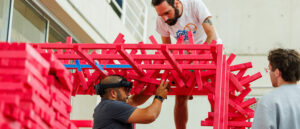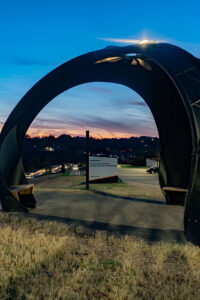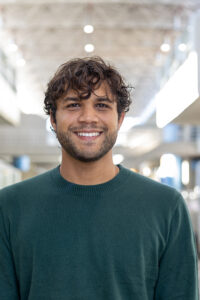
Research & Initiatives
Faculty and students in the College of Architecture and Design pursue diverse research projects that support design excellence, enhance our social, cultural and environmental knowledge of our region, and explore thrilling new futures.

Labs and Initiatives
Faculty have the freedom to pursue independent research or collaborate on dynamic projects. Research thrives here, inspired by teaching, design practice and personal passions.
Our community is supported by a robust network of resources, including funding from the college, university, and external organizations. This network empowers faculty and students to push the boundaries of design and innovation.
See how our faculty make an impact through research that shapes the future of architecture and design.

Student Research
The college creates opportunities for students to be engaged in cutting-edge research, expanding and deepening their educational experience. By participating in research projects – both independent and faculty led – our students engage in critical thinking and make original and creative contributions to the design disciplines.
Opportunities include:
- Independent study
- Thesis work
- Collaborations with faculty
- Design+make projects
Awards + Competitions
Our students have many opportunities to compete in national and international, research-based design competitions and experiences. Students regularly participate in:
Fellowships
The college offers several fellowships, which recognize and foster emerging design educators whose work shows extraordinary promise for the future of the disciplines. Fellows bring their research to the college and teach in our innovative curricula.
- Tennessee Architecture Fellowship
- Digital Futures Fellowship
- Graphic Design Fellowship
- Interior Architecture Fellowship






